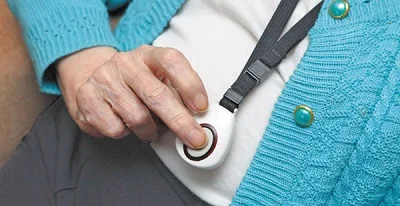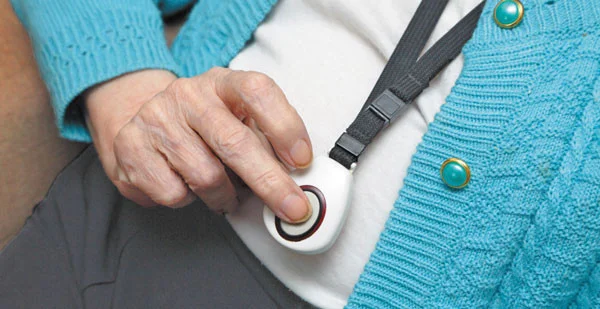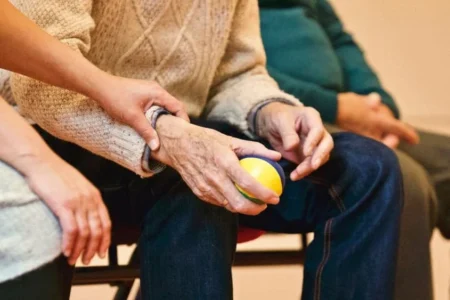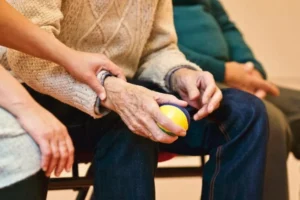The Risk of Falls in Seniors, and the Importance of Fall
- Updated on: Dec 19, 2024
- 3 min Read
- Published on Dec 19, 2023


As our society experiences demographic shifts, the concern regarding the susceptibility of senior adults to falls intensifies. The repercussions of falls extend beyond physical health, impacting both the body and the mind.
This piece will investigate the factors that contribute to the risk of falls in senior adults and examine the pivotal function of medical alert systems in identifying and addressing such occurrences.
Furthermore, we will explore the advantages of these systems in facilitating prompt interventions and offer insights into selecting an appropriate medical alert system for fall detection.
Risk Factors of Falls on Senior Adults
First, let’s take a look at some of the risk factors that are involved with falls experienced by senior adults:
Age-Related Changes
Elderly individuals undergo a spectrum of age-related transformations, encompassing a decline in muscle mass, diminished bone density, and alterations in balance and coordination.
These physiological changes collectively elevate the vulnerability of seniors to falls, underscoring the critical importance of implementing preventive measures.
Chronic Health Conditions
Senior individuals frequently contend with persistent health conditions like arthritis, diabetes, and cardiovascular issues.
These ailments can adversely affect mobility, amplifying the probability of falls and underscoring the significance of implementing proactive strategies for preventing falls.
Medication Side Effects
Medications prescribed to manage health conditions may have side effects such as dizziness or drowsiness, affecting balance and stability. Understanding the potential impact of medications is essential in assessing fall risks among senior adults.
How Medical Alert Systems Work to Detect Falls
It is important to learn how medical alert systems work for fall detection before you proceed with a purchase. Let’s take a look at the details of their functionality here:
Advanced Sensor Technology
Medical alert systems employ advanced sensor technology to detect falls accurately. These sensors are designed to differentiate between normal movements and sudden, unexpected falls, ensuring reliable detection.
Immediate Alert Triggering
Upon detecting a fall, the medical alert system triggers an immediate alert. This alert is sent to a monitoring center, where trained professionals assess the situation and initiate appropriate interventions, such as contacting emergency services or designated caregivers.
Two-Way Communication
Many modern medical alert systems offer two-way communication, allowing seniors to speak directly with the monitoring center. This feature ensures that assistance is tailored to the specific needs of the individual, providing comfort and reassurance.
Benefits of Medical Alert Systems for Better Interventions
Medical alert systems provide a host of benefits for better interventions when it comes to senior adults. Some such benefits include:
Timely Assistance
One of the primary benefits of medical alert systems is the provision of timely assistance. Rapid response to a fall minimizes the time a senior spends in a vulnerable state, reducing the risk of complications and improving overall outcomes.
Choosing the Right Medical Alert System for Fall Detection
Now, let’s delve into the factors that you should keep in mind when choosing a medical alert system for fall detection:
Consideration of Features
When selecting a medical alert system for fall detection, consider features such as accuracy, reliability, and user-friendliness. Look for systems with advanced sensors and customizable options to suit the individual needs of the senior.
Integration with Lifestyle
Choose a system that seamlessly integrates with the senior’s lifestyle and any specific health issues such as nerve disease. Whether they prefer a specific kind of wearable device, the system should adapt to their routines, ensuring consistent protection.
Reviews and Recommendations
Conducting thorough research and delving into reviews assumes paramount importance when making well-informed decisions. Engage in an exploration of customer testimonials and professional reviews to assess the performance and reliability of various medical alert systems.
Conclusion
In addressing the risk factors associated with falls in senior adults, medical alert systems emerge as a vital tool for ensuring prompt and effective interventions.
The ability to detect falls and summon assistance quickly contributes to the overall well-being and independence of senior individuals.












